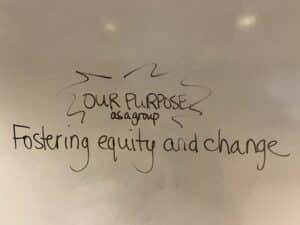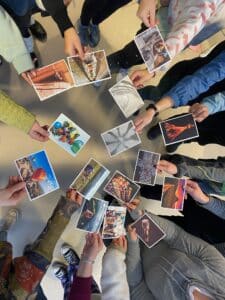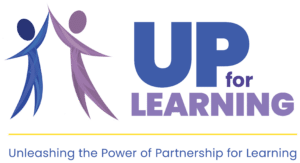The Williston Central School Youth and Adult Team met on February 8th for their fifth retreat. During the gathering, the team explored the difference between punitive and restorative approaches to conflict, learned about peer mediation and youth justice panels, and continued planning for several DEI-oriented school initiatives. The team is composed of several adult staff members, Principal Jaqueline Parks, and 20 5th-8th grade students.

After taking part in a community building activity, the team discussed a typical scenario that could occur in a school setting: one youth brings a backpack to school with a bag of chips in it. When they are not looking, without their permission, another youth takes the chips from their backpack. Later, this same youth shares the chips with a third youth, and does not tell them where they came from. In small groups, the team answered the following questions: Who is affected in this scenario? How are people affected (which includes what we mean by “affected”)? What are restorative actions—things that can make things right— without over-reliance on punishment?
During their discussions, the group looked at the following table, and explored the differences between the two approaches, punitive and restorative. They asked, using a punitive method, what would likely happen to the wrongdoer in the above scenario? What would happen to those who were harmed? On the other hand, what would likely happen if the school used a restorative approach?
| Punitive | Restorative |
| Only deal with the wrongdoer | Include those who are affected by the incident in the response |
| Focus on what rule was broken | Understand how people were affected and what harms occurred |
| Punish the wrongdoer | Agree on actions to make things right |
| Exclude wrongdoers through suspension, expulsion, etc. | Find what actions can be taken to repair harms and get right with the community |
After their conversations, the group watched an excerpt from the 2013 documentary Growing Fairness, which explores restorative practices in schools. The team focused on two approaches, peer mediation and youth justice panels, and discussed how these initiatives, or ones like them, might be implemented at their school. They also discussed how to make the process of the school’s Planning Room Discipline more restorative.
At the close of the retreat, each member of the team selected a postcard that represented how they were feeling after spending the time together. Many spoke about feeling empowered and inspired to keep strengthening relationships in their school community.


